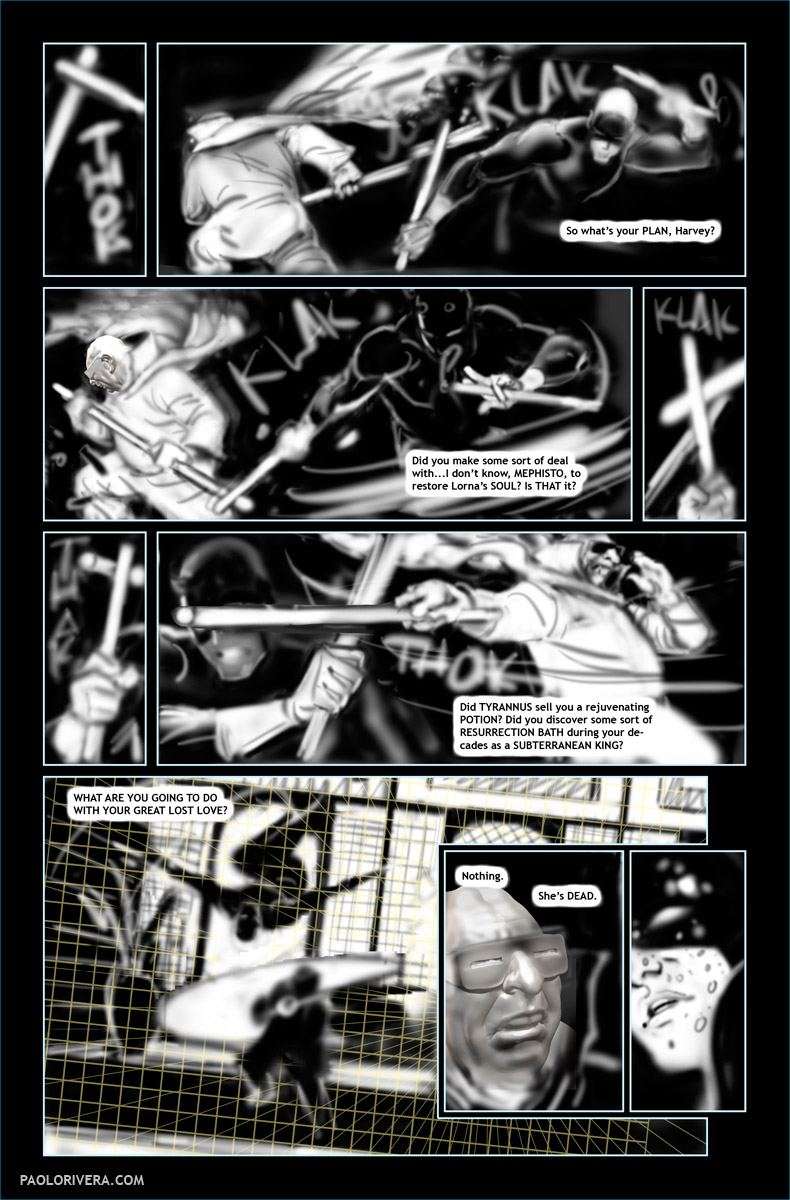 |
|
Daredevil #10, Page 7 Digital Sketch. 2012. Photoshop, 11 × 17″.
|
I use the Cintiq in close collaboration with my wireless keyboard and trackpad, which are linked together with Clique from Henge Docks. They rest on an adjustable-height tray that I installed underneath my drafting table (video here). This makes it easy to place the keyboard right where I want it. Learning keyboard shortcuts is an essential part of using programs like Photoshop efficiently — here’s the default list, but you can also customize buttons and actions (Edit> Keyboard Shortcuts… or Menus…).
The more you use the program, the more the keys become second nature. If you can’t touch type, learn, as it will free your eyes from having to chaperone your fingers. Since I’ve given custom assignments to each of the buttons on my pen, I’m forced to press Control with my left hand to elicit a right-click, which is essential for bringing up submenus and other options.
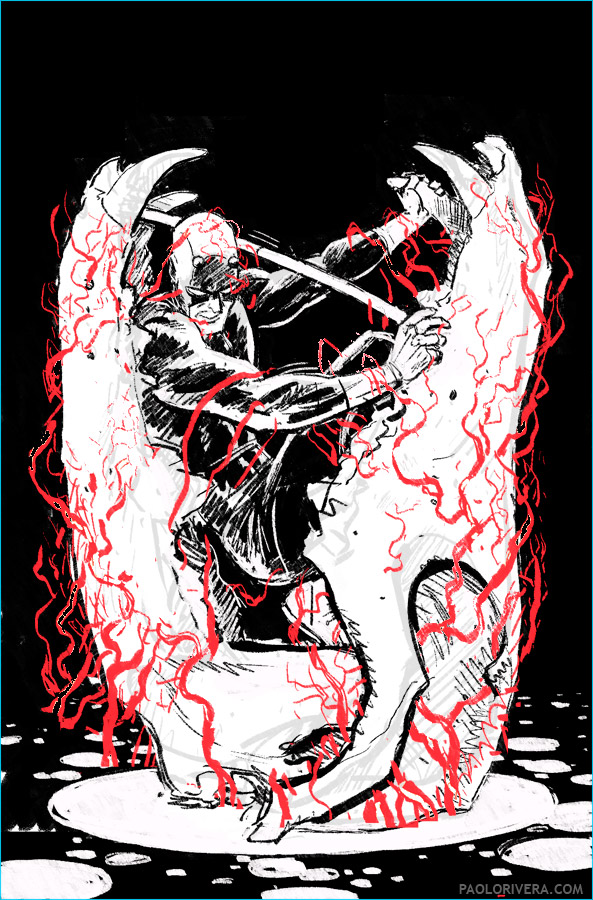 |
|
Daredevil #21 Cover Digital Sketch. 2012. Photoshop, 11 × 17″.
|
Besides common functions, I use the keyboard to switch to my favorite tools: B for Brush and W for the Magic Wand are the easiest examples. I set the N key to the Pencil tool since I often use it to color comics (The Pencil is strictly one color, whereas the Brush varies in opacity). In the case of the Eraser (E) and Rotate (R) tools, I hold down the key during use, utilizing their “spring-loaded” attribute. When released, the cursor snaps back to whatever tool was being used previously. Since I only use those tools briefly in the midst of other work, it keeps me focused on the task at hand. (The Rotate tool makes it easier to find a good working angle while drawing. Pressing Escape snaps the canvas back to its default position.)
You can go to town with button assignments, depending on your personal preference. This option is available under your computer’s general settings, and you can even assign buttons to have different functions depending on the application used (though this can get confusing if not used sparingly). If it’s a repetitive task, then it’s a good candidate for a Keystroke: instead of assigning one key to each button, the single button can be programmed with a whole chain of tasks.
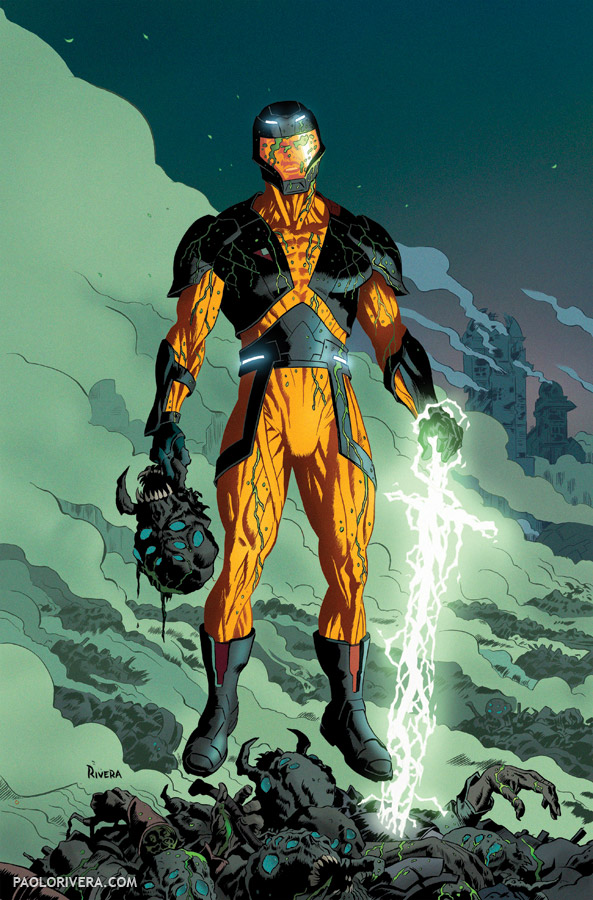 |
|
X-O Manowar #10 Variant Cover. 2012.
Ink(ed by Joe Rivera) on bristol board, 11 × 17″.
|
Since I often color digitally, I am constantly using the Hue/Saturation/Brightness function (Command-U) and Color Balance (Command-B) to alter patches of color. This is usually after selecting a particular section with the Magic Wand, which is then highlighted by the “marching ants.” This is distracting to me, so I include the Hide function (Command-H) in the keystroke, combining both actions into one. (Instead of grabbing the palette sliders, I tend to use the keyboard arrows to adjust the numbers. Holding shift makes them jump by 10s. Tab cycles through all the attributes.)
Rounding out the list of buttons are many other programmed functions:
Snap (Shift-Command-;), Fit on Screen (Command-0), Step Backward (Command-Option-Z), Step Forward (Command-Shift-Z). The Radial Menu is a Wacom-specific list of options that can be customized with everything from Wacom settings to screen capture. (There are videos about this and many other topics on Wacom’s YouTube channel.)
I hope you all don’t mind if I extend this topic for one more post — it’s pretty technical information, and I want to make it easily digestible. The last part will focus on brushes. Thanks!



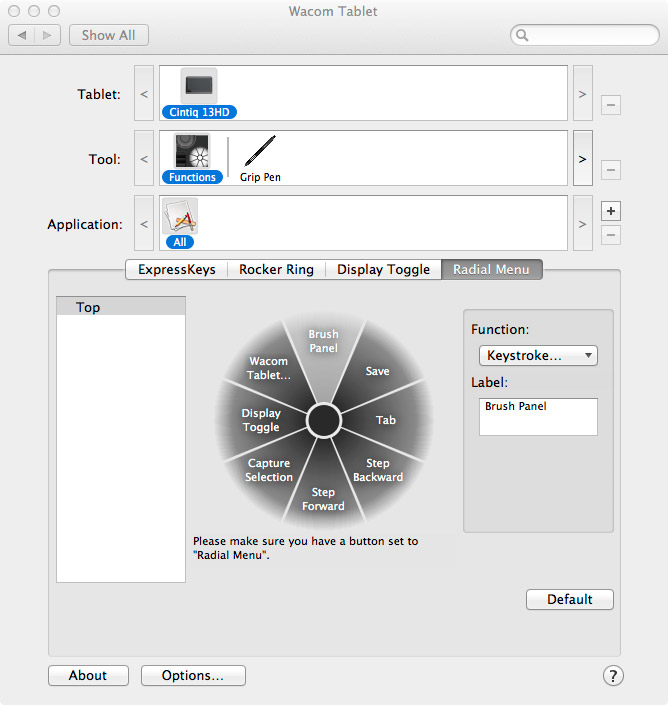
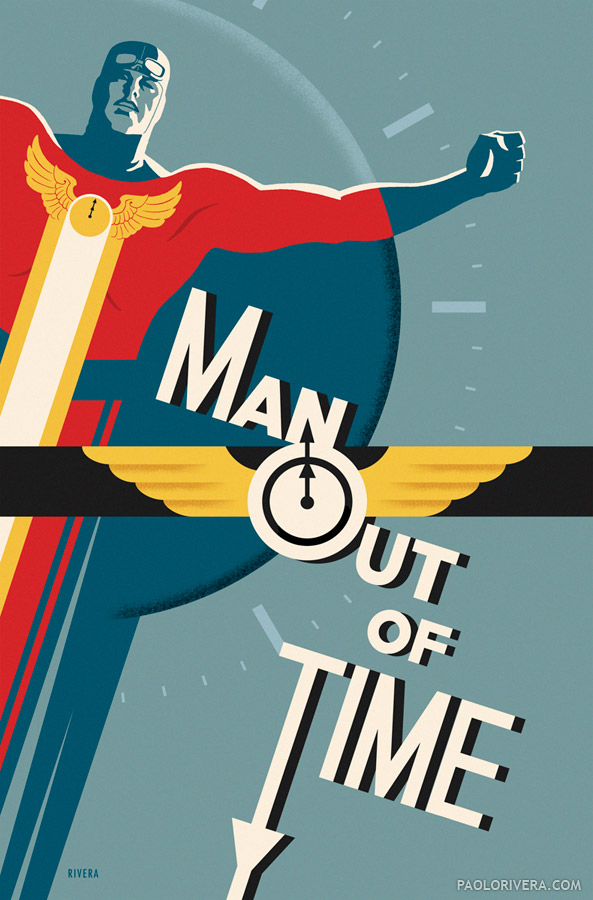
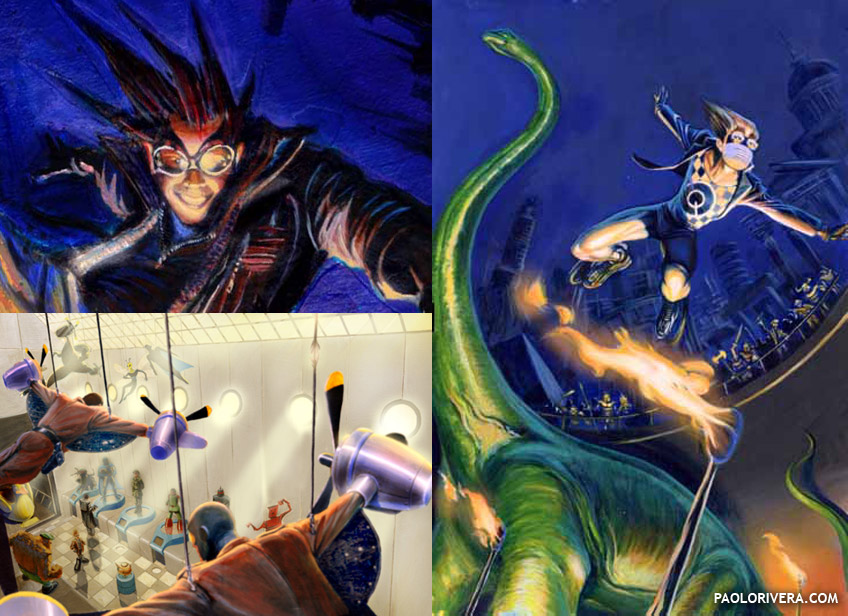

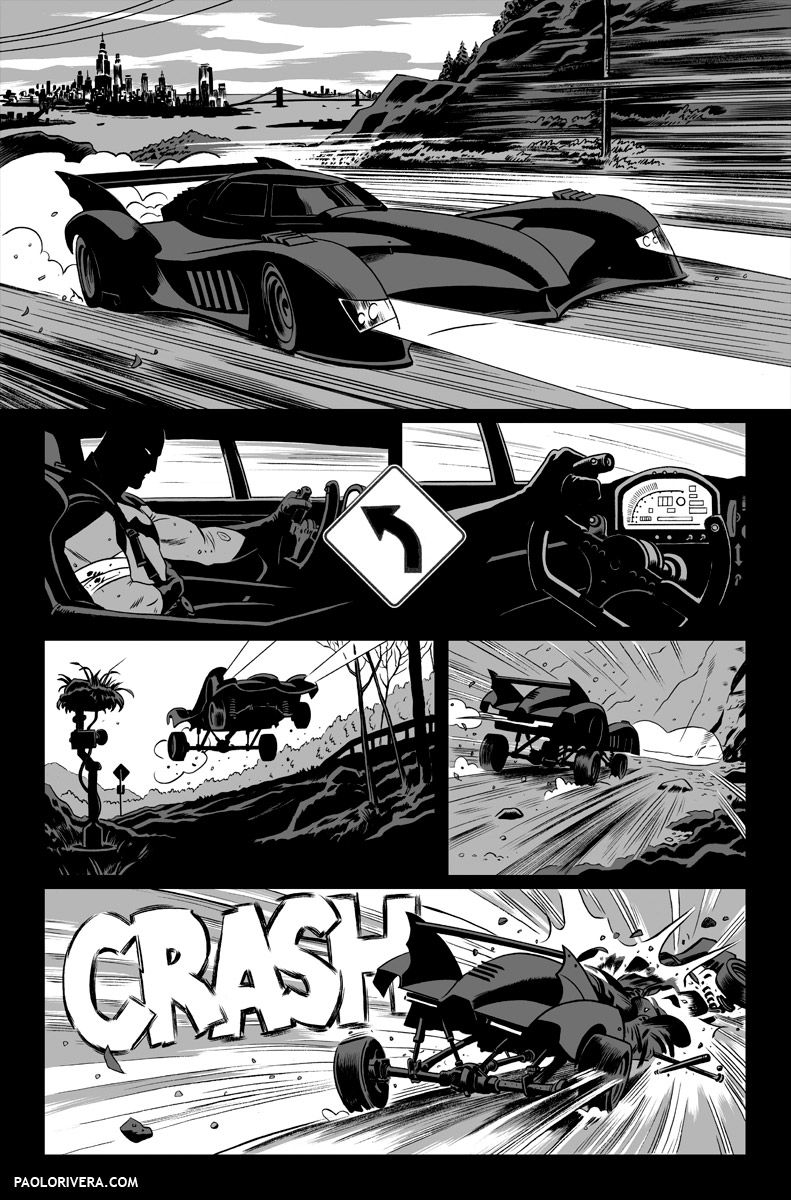
Thanks again for these posts! Always nice to see the cogs of the machine.
How'd you get that perspective grid in the bottom panel? Looks like a neat tool for building cities and such…
That's my own digital perspective grid in Photoshop. It's something that I've been planning on releasing to the world at large, but it requires me to make instructional videos. Hopefully I'll get around to doing it this year. I'll be sure post about it here when I finally do.
My pleasure, Peter! Thanks!